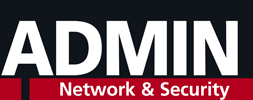macOS on-board tools and third-party applications can help prevent the loss of files and make security and backup your first priority.
Nitrokey hardware authentication devices aim to raise data encryption, key management, and user authentication security to the next level.
DMARC combines the abilities of SPF and DKIM to safeguard and protect against spam and phishing and allows targeted configuration according to company policy.
Systemd comes with a metric for determining the security of your system, letting you track how any service can be secured step-by-step in a sandbox.
Systemd comes with two functions for container management that allow many programs to run more securely through isolation.
The systemd Homed service makes it easy to move your home directory, and FIDO2 or PKCS#11 can secure the stored files.
Windows 10, build 21H1, has numerous protection mechanisms out of the box. We look at the option for delaying updates, the components and features of Microsoft Defender, and recommendations for hardening the operating system.
Acceptance of zero trust models like BeyondCorp by Google or LISA by Netflix lags in Europe, where endpoint security is king. We examine why this situation must change by looking into the principles of modern zero trust concepts.
In this overview, we look at the opportunities eSIM technology offers for the mobile workplace and what IT managers need to watch out for in deployment and management.
The free Community Edition of the Nutanix hyperconverged infrastructure, Nutanix on-premises cloud, is offered alongside its commercial product for those looking to take their first steps in the environment.











